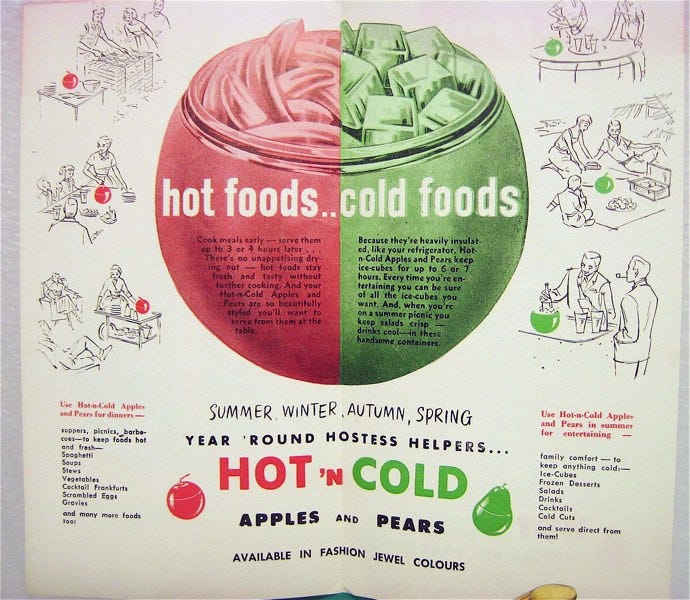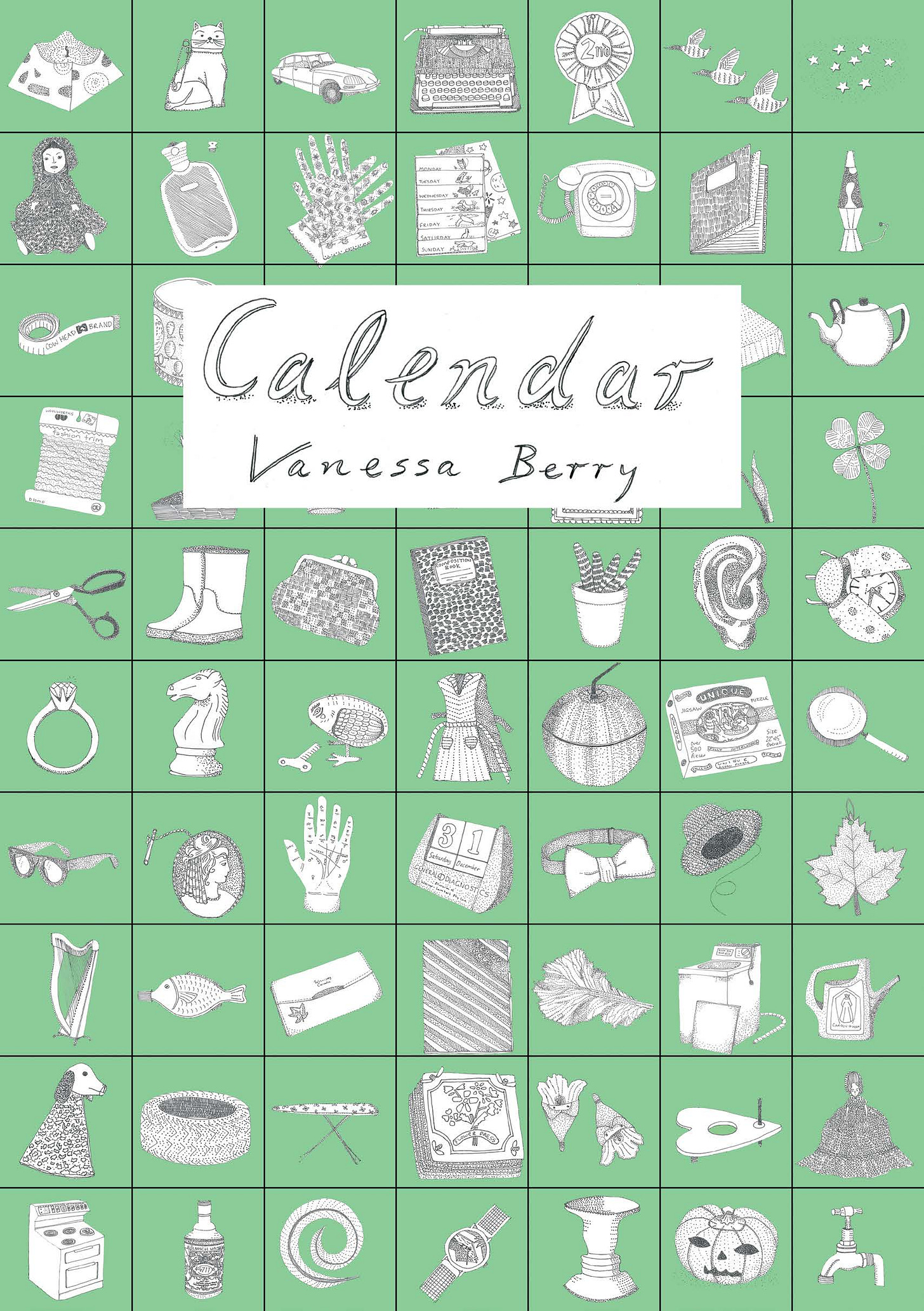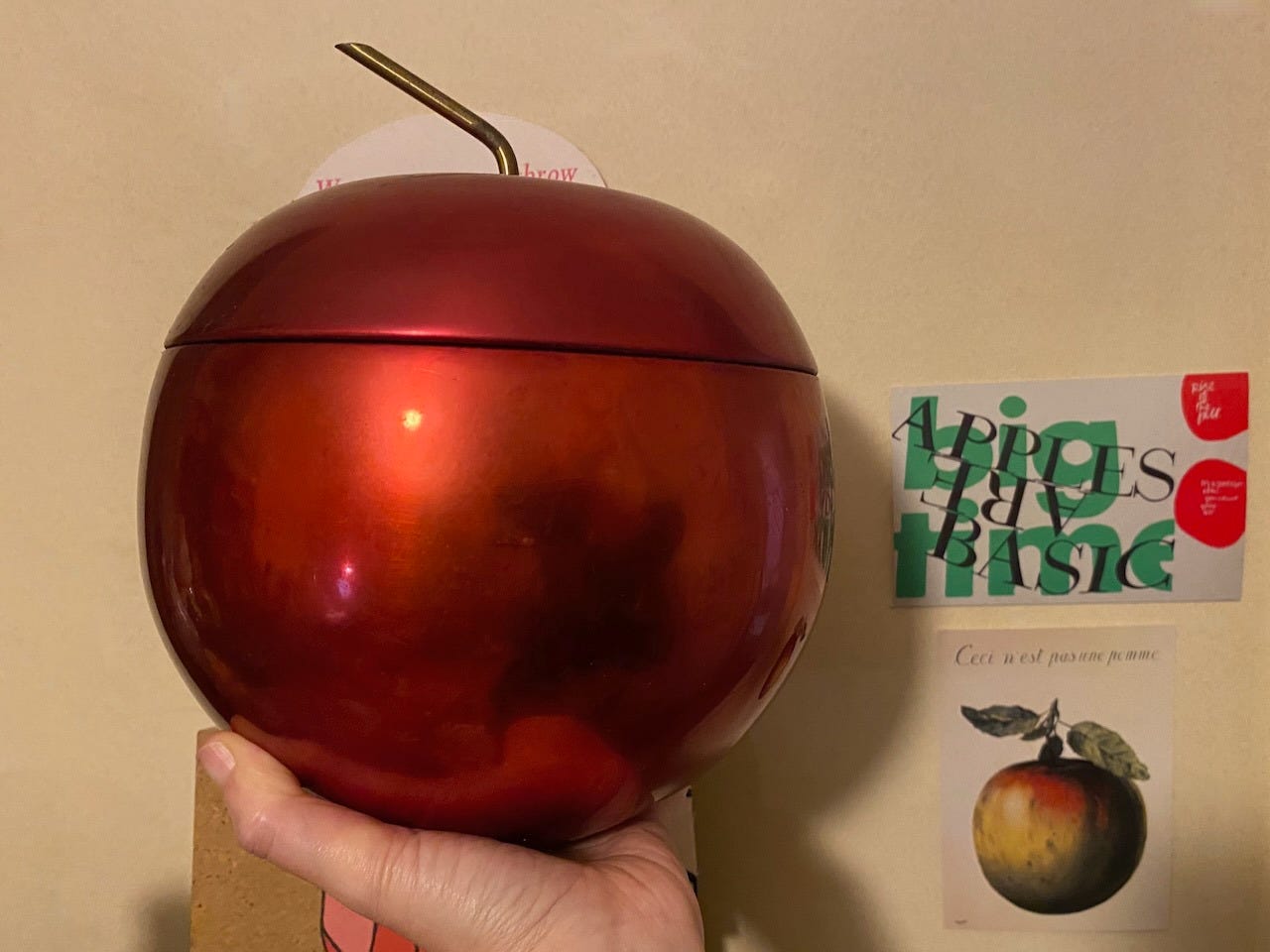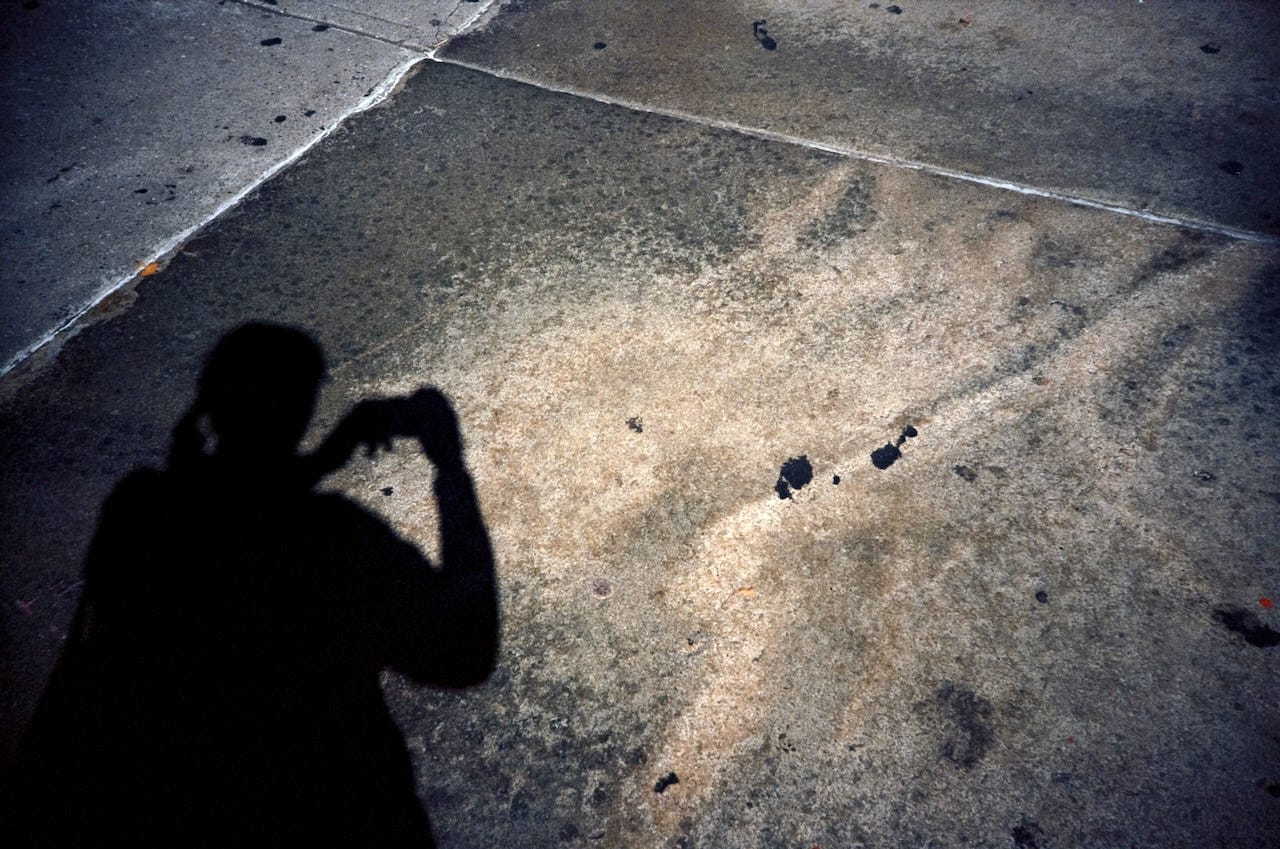When the extra hour was scheduled at the end of daylight saving time, 2am becoming 1am, I liked the idea of staying up to experience the doubling back of time. Of course nothing much would actually happen at this moment. There would be no glitch, no jolt, only perhaps the time on my phone moving from 1:59 to 1:00, one invention inside another. But I must have fallen asleep before the hour switch came, because it was then suddenly morning.
Thinking about the extra hour makes me call to mind a corner store in Stanmore that used to have, painted on the side of the awning, ‘Open 8 Days’. Although it has not said this for a long time - it was replaced by a new, sensible sign saying ‘Open 7 Days’ sometime in the early 2010s - I still think of it this way. I liked to imagine that inside the corner store I could find the 8th day.
Between last month and this one Calendar has been typeset: always a transformation, to see the text in book format after years of working on it in notebooks, loose pages, computer files, drawings, phone notes and messages, and it taking up so much of my thoughts and days. It feels (and is) closer to being a book now. It will be out in October: if you’d like to preorder a copy, you can here.
Object of the Month (in which I expand on some of the objects I write about in Calendar)
Anodised Apple
Writing about an object every day for a year I observed certain patterns, certain categories of things that I am drawn to. Some are predictable, such as writerly objects, or secondhand, op shop things. Others show an attraction to a symbol or shape: so it is with apples, which appear as a number of objects in Calendar, one of these being a red anodised ice bucket.
The ‘Hot-N-Cold Apple’ started local production in the 1950s, made by Lemar, the same company that made anodised lamps. The apple was available in red and green, and I’ve seen gold ones too. I’ve never used mine as an ice bucket or for any of the uses given in the pamphlet below, a surprising array of suggestions including keeping scrambled eggs warm. I just like having it around as a symbol of good, a big red apple that reflects the room in its shiny surface.
Anodised apple ice buckets must have been popular at the time: there are plenty available secondhand, although some of them are startlingly expensive (I found one for sale for €390, for example). Of their official history, I suspect they might be based on a 1950s silver apple ice bucket designed by Ettore Sottsass, but further research would be needed. Evidence from advertising points to their most popular season being 1953/54, and in December 1954, red apple ice buckets went viral in New York thanks to the Queen Mother’s Christmas shopping of items ‘well past their peak sales as novelties’.

Object Project
Over the long weekend I read On the Calculation of Volume by Solvej Balle, a novel in two parts that follows the experiences of a woman trapped within the same, repeating day, November 18th. Her attempts to understand and live within this day are described through a sequence of numbered days, advancing as yet more November 18ths recur. It reminded me of Marlen Haushofer’s The Wall, in which a woman on a trip in the Austrian mountains finds herself trapped within an invisible wall and must make meaning from her life in these lonely and confusing circumstances. Both novels give me a similar feeling, that I want to arrange the trick that sets time going again, or removes the wall, but there is nothing I can do but observe.
On the Calculation of Volume is a novel about time, but it is also very much about objects, which operate as companions, clues and complications throughout Tara Selter’s days. They are unpredictable: sometimes the objects she acquires on the day stay with her, other times they disappear as the day is reset back to the morning of November 18th. “It was a fact that the objects of the world sometimes stayed with me and sometimes went back to where they had come from.”
While no one she encounters on her 18ths remembers her on the consecutive day (which is also the 18th November), Tara’s mark on the world is shown through the produce she consumes, and which is not replenished. In this way, she describes, she ‘eats up the world’. In the supermarket near her home:
More things are disappearing. All the caramel flavoured chocolate has been eaten up. Some of the bread baskets are now empty and on the bottom shelf in the bread section there are only two packs of biscotti surrounded by thin air because I have taken the rest. Several sorts of cheese have vanished from the cheese section, there are no tomatores in the fresh produce aisle and there is no ignoring the great dents that have been made in the shelves. I did this, it has happened gradually, one day at a time.
Questioning the rules of time, space and matter by which we understand the world is a powerful thing, to show that what might feel fixed and stable about life is in fact ‘improbable, unpredictable, remarkable’.
Elsewhere this month
In early April I was in Newcastle for the Writers’ Festival, to launch the zine collection at Newcastle City Library: this includes the Octapod Zine Library collection, which began in the 1990s around the same time as the National Young Writers’ Festival. A selection of zines are available for browsing and borrowing, and the collection is well worth a visit if you are in Newcastle. And in further zine-related news, the new Cockatoo Comics shop has opened in Lane Cove, stocking independent comics and zines.
Coming out soon I have an essay about Bernadette Mayer in the May issue of HEAT literary magazine. The essay is about Bernadette Mayer in New York City, and includes a sequence of photos based on Mayer’s Memory, that I took in NYC following her practice in Memory of taking a roll of 36 photographs every day for a month, though I only did it for one day. I hadn’t used an analogue camera (my much-loved LOMO LC-A) for years, and it felt good.
Wishing you good days, dear readers,
Vanessa.









I'd pass the 'Open 8 Days' sign on my way to work in Leichhardt.
For some reason it deeply annoyed me.
But, now it is updated, 'corrected', I miss it. How boring, 'Open 7 Days'.
An apple as a symbol of good? Eden, Snow White, Alan Turing’s suicide. Perhaps a metal apple, which can’t be eaten, is the only safe type?